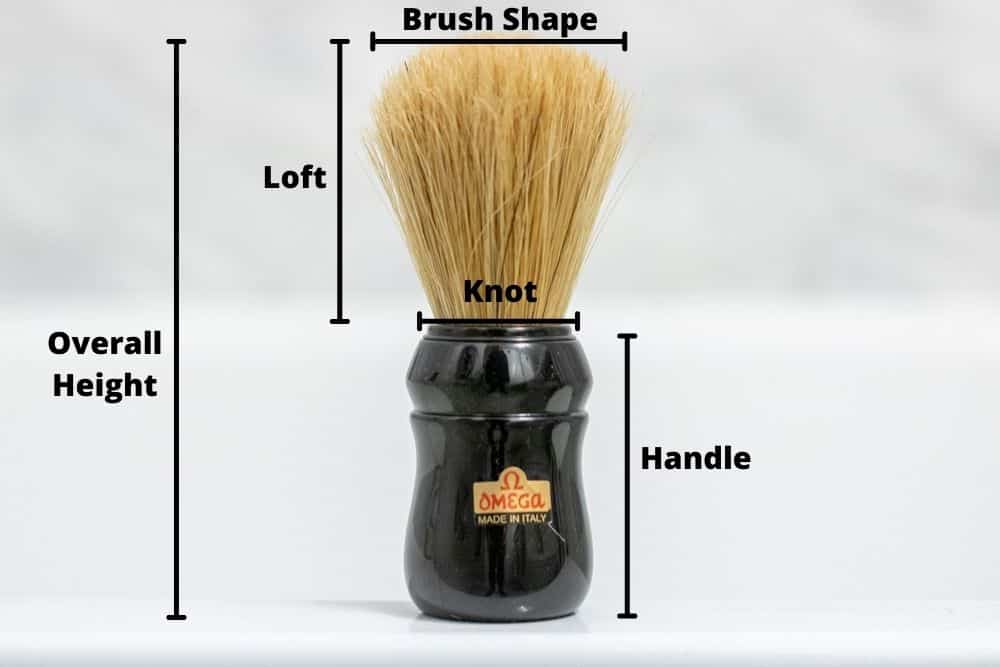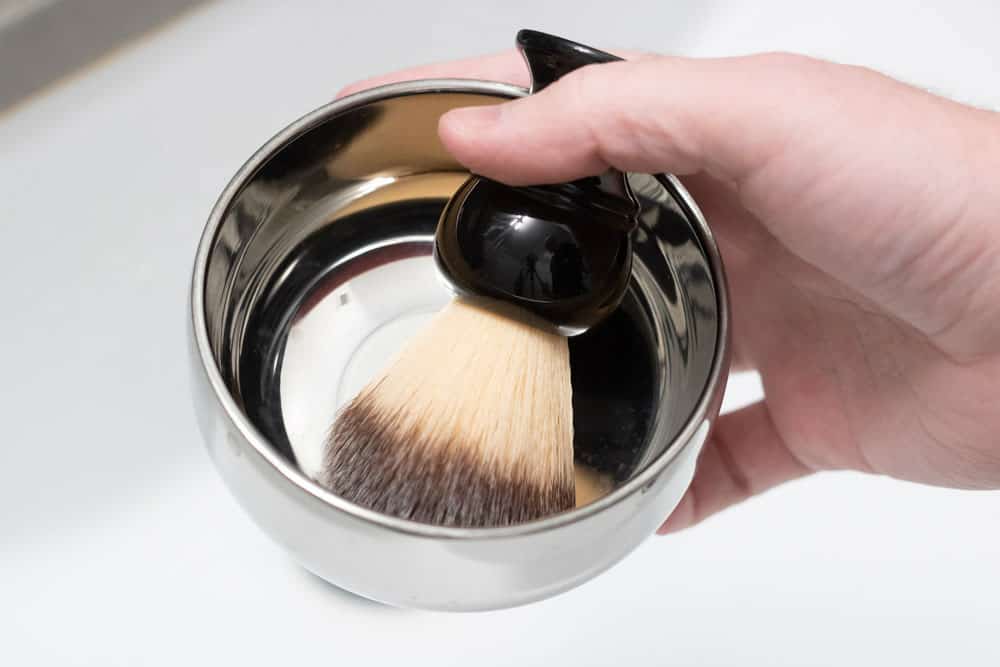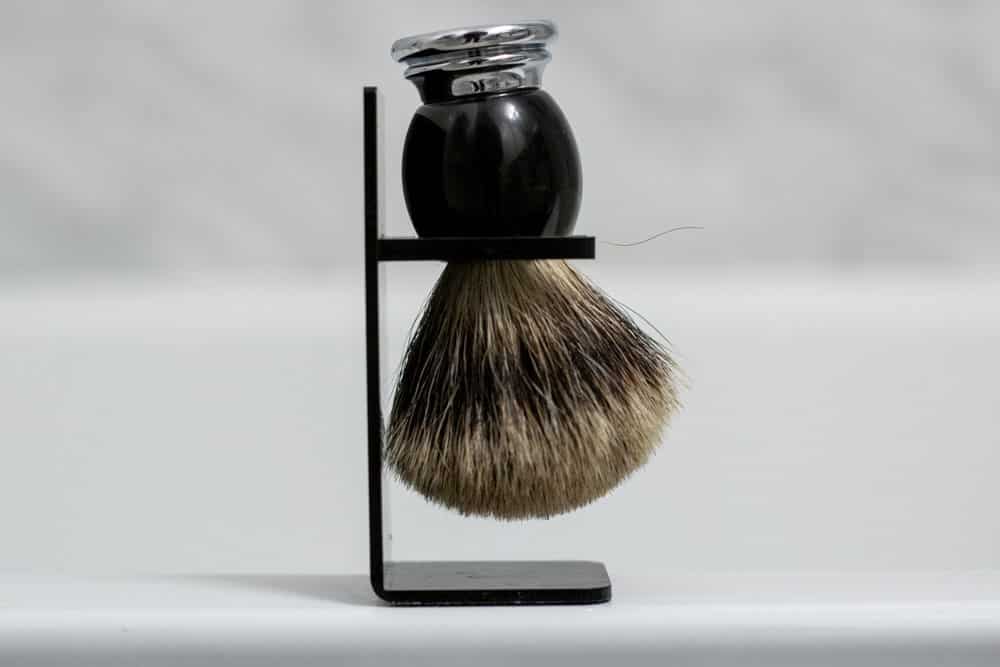Invented in the 18th century, shaving brushes have become a part of everyday life for men around the world, particularly those who enjoy traditional wet shaving. However, despite their long history, many are uncertain of the advantages that shaving brushes offer when used properly.
In this guide, we will provide you with a detailed look at the shaving brush. This includes a list of their core benefits, a comparison of the various types of animal and synthetic fibers, along with how to use and maintain them properly.
What is a Shaving Brush Used For?
A shaving brush provides two primary purposes. The first is to assist in the generation of a thick lather from a shaving cream or shaving soap. A shaving brush is also used in applying the whipped shaving cream to your face.
Benefits of Shaving Brushes
When a good, thick lather is applied to the face, it will be effective at retaining both water and heat close to the skin. This is helpful in softening and swelling the hair follicle root. When the razor blade cuts through thicker and softer hair, there will be less pulling on the root which reduces irritation.
Additionally, shaving brushes also provide a mild exfoliation to the skin. This is helpful in lifting both dead skin cells and oils prior to shaving.
The Different Types of Shaving Brush Fibers
Shaving brushes can be made from one of the four fiber types: badger, boar, horsehair, or synthetic.
Below is an explanation of each fiber type and its properties:
Badger Bristles
Badger hair is the most common type of shaving brush fibers currently available. This hair is available in several different grades:
- Pure: The cheapest and most widely available, pure badger hair is sourced from the underbelly of the badger. Typically, this hair is black but might be dyed to look like a silvertip brush. Pure badger hair is stiff and may feel “prickly” when rubbed against the skin. This hair grade is suitable for practice.
- Best: This hair is considered to be marginally better than pure. The bristles are slightly softer and more pliable. As a result, best badger hair brushes may cost slightly more when compared to pure badger brushes.
- Super: Finer and softer than pure and best hair, super badger hair will be partly silver and black. It is a high-quality fiber that balances performance and cost. Super fibers have better water retention when compared to lesser grades. When applied, the exfoliation is gentle.
- Silvertip: The highest quality and most expensive grade of badger hair is silvertip. Silvertip badger hair holds a significant amount of water which results in a thick, rich lather. This hair grade is soft which provides a pleasant application.
Badger hair brushes are sourced from the Eurasian Badger which is native to China. The badger is killed when the fibers are collected.
Boar Bristles
Unlike other animal fibers, boar bristles absorb water rather than holding or trapping. As a result, boar bristles can generate a good lather. Boar bristles are longer than badger hair and feature a stiff backbone. The rigid backbone makes them suitable for hard shaving soaps. With continued use of a boar brush, split ends will occur, which softens the feeling of the brush.
Due to the wide availability of boar, this type of shaving brush is inexpensive. The boar is killed when fibers are collected.
Horse Hair Bristles
Due to the anthrax scare during World War I, horse hair shaving brushes fell out of popularity among men. Horse hair brushes typically feature a long loft similar to a boar hair shaving brush. However, horse hair fibers are softer and more pliable similar to pure or best badger hair. Unlike boar and badger hair, the horse is not killed, making it an animal-friendly alternative. Hair is sourced from the mane or tail of the horse. The composition of fiber is often noted in percentages: such as 35% mane and 65% tail. The mane hair is softer and tail hair is firmer.
Synthetic Bristles
A shaving brush made from man-made materials is categorized as synthetic hair. Synthetic brushes have a low price point, making them a suitable option for beginners. Synthetic bristles don’t absorb water; rather, it traps liquids between each individual bristle. When generating a lather with synthetic brushes, additional water will often be required. Given that synthetic materials are man-made, it is an animal-friendly alternative to other popular options.
Anatomy of a Shaving Brush

The shaving brush can be broken into five sections: knot, loft, handle, overall height, and brush shape. Here’s an overview of each:
Knot
The area where the bristles are attached to the shaving brush is known as the knot. Knot diameters can range from 14mm to 31mm. A larger and tightly packed knot can hold more water. Handmade knots have been hand sewn and glued. A handmade knot will typically last longer than a machine-made knot.
Loft
The area between the knot at the tip of the bristles is known as the loft. A longer loft can hold a greater amount of water. However, a longer loft is harder to control, which makes both mixing the lather and applying the shaving cream difficult.
The backbone of the loft is a subjective measurement of the stiffness of the bristles. Some shaving brushes may have a “stiff” backbone, such as boar’s hair, where others may have a “soft” backbone such as silvertip badger hair.
Handle
Brush handles can be made from a variety of materials. Popular materials include acrylic, metal, wood, and ox horn. While the handle provides weight to the shaving brush, it has little impact on the overall performance of the lather or application of shaving cream.
Shaving brush handle shapes vary from rounded to angular. Choose one that feels comfortable when being held.
Overall Height
Selecting a shaving brush height is a balance of control and personal preference. A short shaving brush provides greater control. Some men may purchase a shaving brush that compliments their hand size.
Brush Shape
A shaving brush can have several different brush shapes which include the following: flat, round, hybrid, and fan. The performance differences between each brush shape are minimal.
Country of Origin
Shaving brushes contain several components that can make the country of origin difficult to determine. Handmade shaving brushes are often made in the USA, Germany, and Italy. However, shaving brushes made in these countries may import badger hair from China that is used during assembly.
Compatible Shaving Creams
Shaving brushes are recommended to be used with both traditional shaving creams and shaving soaps. Unlike a canned or gel shave cream, traditional shaving soap or cream can be whipped into a thick and dense lather with a shaving brush.
Using and Maintaining a Shaving Brush
While a shaving brush can be used by itself, it is recommended that you also have a shaving bowl and shaving brush stand.
Shaving Bowl (Scuttle) or Mug

A shaving bowl or shaving mug allows you to generate a good lather with a shaving brush prior to application. Well-made shaving bowls and mugs feature a double-wall design that insulates to retain heat effectively. This added heat retention allows for a better lather when mixing the shaving cream.
Shaving Brush Stand

A shaving brush stand allows the brush to dry out properly by not allowing moisture to rest deep in the knot. This will improve the lifespan of the shaving brush while also reducing the chance of mold or mildew.
When a Shaving Brush Should be Replaced
When shaving brushes begin to smell of mold or are showing signs of repeated shedding, then the brush should be replaced. It is expected that a new shaving brush will shed some initial fibers after the first few uses. A well-made shaving brush is expected to last 10 to 15 years.
Shaving Brush FAQs
Should shaving brushes only be used with classic razors?
While shaving brushes are often associated with straight razors and safety razors, they can be used with modern cartridge razors. The main purpose of the shaving brush is for shaving cream lather generation and application.
Should a shaving brush be worked into your grooming routine?
Using a shaving brush is optional. However, using a shave brush with a quality shaving cream may provide comfortable results, especially for men with sensitive skin. If you are experiencing discomfort during or after shaving, some factors that may contribute to discomfort include poor shaving technique, going against the grain while shaving, and too much pressure.
Are there certain steps you should take to clean a shaving brush?
When cleaning a shaving brush, you will want to follow these steps (applicable to all hair types):
- Run under warm water to rinse excess shaving cream from the bristles and knot.
- Wring out the shaving brush by gently squeezing it with your fingers.
- Place in a brush stand, bristles pointing down, and let air dry.
Where should shaving brushes be stored?
While the bathroom is a natural storage location, if possible, a shaving brush should be stored in a dry place. This allows moisture in the bristles and knot to fully dry between each use.
Should you sterilize a shaving brush?
Shaving brushes do not require sterilization. Shaving creams and soaps are detergents that will be helpful in removing some bacteria.
Is it okay to share a shaving brush?
Shaving brushes should not be shared as they may contain bacteria, dead skin, etc. Many states require that barbershops disinfect their tools with an EPA-approved disinfectant after each client (NYS rules). However, sharing a shaving brush between just you and your partner likely won’t be a problem.
Conclusion
We hope that this guide was helpful in understanding more about shave brushes, the various types of animal hair they may use, and their benefits when used properly. Please be sure to check out our other great shaving resources available for free.